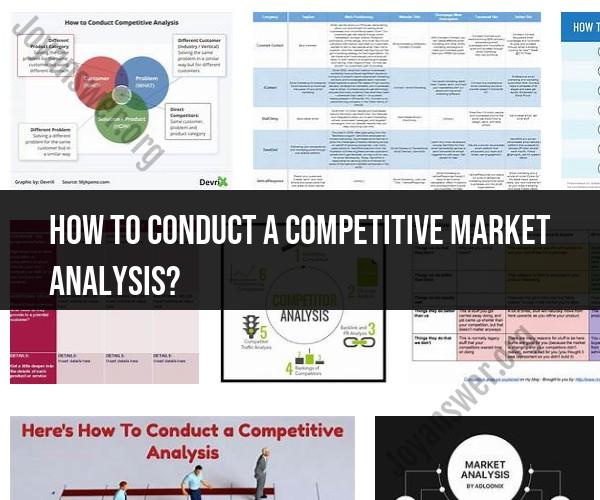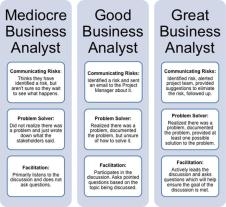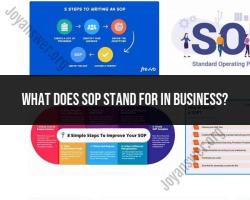How to conduct a competitive market analysis?
Conducting a competitive market analysis is essential for understanding your business's position in the marketplace, identifying your competitors, and gaining strategic insights to make informed decisions. Here's a step-by-step guide on how to conduct a competitive market analysis:
Define Your Objectives:
- Clearly outline your goals and objectives for conducting a competitive market analysis. Are you looking to identify key competitors, assess market trends, find gaps in the market, or improve your competitive positioning?
Identify Your Competitors:
- Make a list of your direct and indirect competitors. Direct competitors offer similar products or services to the same target market, while indirect competitors may offer alternatives or serve related markets.
Gather Information:
- Collect data and information about each competitor. This can include:
- Company profiles: Size, location, history, and mission.
- Products and services: What they offer, pricing, and unique selling points.
- Market share: Estimate their share of the market.
- Customer base: Who their customers are and their demographics.
- Marketing strategies: Advertising, online presence, social media, and content marketing.
- Strengths and weaknesses: What they excel at and where they may have limitations.
- Collect data and information about each competitor. This can include:
Analyze Competitor Websites and Content:
- Visit their websites and review the content, including product listings, blogs, customer reviews, and any downloadable resources. Analyze the user experience and design of their websites.
Assess Online Presence:
- Examine their social media profiles, engagement, and follower counts. Look at their online reviews and ratings on platforms like Google, Yelp, or industry-specific review sites.
SWOT Analysis:
- Perform a SWOT analysis (Strengths, Weaknesses, Opportunities, Threats) for each competitor. Identify what they excel at, where they may be lacking, potential growth opportunities, and external threats.
Market Positioning:
- Determine how your competitors position themselves in the market. Are they known for quality, affordability, innovation, or another key attribute? Compare this with your own positioning.
Pricing Strategy:
- Analyze their pricing strategies. Are they positioned as premium, budget-friendly, or somewhere in between? Consider how your pricing strategy aligns with or differs from theirs.
Customer Reviews and Feedback:
- Read customer reviews and feedback on platforms like social media, review websites, and forums. Pay attention to common complaints or praise points.
Sales and Distribution Channels:
- Explore how competitors sell and distribute their products or services. Are they using online sales, brick-and-mortar stores, or a combination of both? Assess their distribution networks.
Competitive Advantage:
- Identify each competitor's unique selling proposition (USP) and what sets them apart from others in the market. Compare this to your own USP.
Market Trends and Opportunities:
- Research industry trends, emerging technologies, and market opportunities. Consider how your competitors are adapting to or capitalizing on these trends.
Benchmarking:
- Use the data and insights gathered to benchmark your business against competitors. Identify areas where you can improve or differentiate.
SWOT for Your Business:
- Conduct a SWOT analysis for your own business, comparing your strengths, weaknesses, opportunities, and threats to those of your competitors. This helps you develop a more strategic plan.
Actionable Insights:
- Based on your analysis, develop actionable insights and strategies to enhance your competitive position. Consider how you can capitalize on competitor weaknesses and opportunities.
Regular Monitoring:
- Competitive analysis is an ongoing process. Continuously monitor your competitors and the market landscape to stay updated on changes and trends.
Implement Strategies:
- Put your insights into action by making informed decisions on pricing, marketing, product development, and other aspects of your business.
A competitive market analysis is a valuable tool for informed decision-making, strategic planning, and staying competitive in your industry. It helps you understand your competitive landscape and identify opportunities to stand out and grow your business.
Step-by-Step Guide: How to Conduct a Competitive Market Analysis
A competitive market analysis is a process of identifying and evaluating your competitors. It involves gathering and analyzing data about your competitors' products or services, pricing, marketing strategies, and target markets.
To conduct a competitive market analysis, you can follow these steps:
- Identify your competitors. Who are your direct and indirect competitors? Direct competitors offer similar products or services to your target market. Indirect competitors offer different products or services, but they may still be competing for your target market's attention.
- Gather data about your competitors. You can gather data about your competitors from a variety of sources, such as their websites, social media pages, industry reports, and customer reviews.
- Analyze your competitors' strengths and weaknesses. Once you have gathered data about your competitors, you need to analyze it to identify their strengths and weaknesses. This will help you to identify areas where you can differentiate your business from the competition.
- Assess your competitive landscape. Based on your analysis of your competitors, you can assess your competitive landscape. This includes identifying the key players in the market and the market share of each player.
- Develop a competitive strategy. Based on your competitive analysis, you can develop a competitive strategy that will help you to succeed in the market. This strategy should focus on differentiating your business from the competition and appealing to your target market.
Analyzing Your Competitors for a Successful Market Analysis
When analyzing your competitors, it is important to consider the following factors:
- Products or services: What products or services do your competitors offer? What are the key features and benefits of their products or services?
- Pricing: How do your competitors price their products or services? Are their prices competitive?
- Marketing strategies: What marketing strategies do your competitors use? Where do they advertise? What kind of content do they create?
- Target markets: Who are your competitors' target markets? How do they reach their target markets?
By analyzing your competitors in these areas, you can identify their strengths and weaknesses. This information can then be used to develop a competitive strategy that will help you to succeed in the market.
Tools and Strategies for Effective Competitive Market Research
There are a number of tools and strategies that you can use to conduct effective competitive market research. Some common tools and strategies include:
- Search engines: You can use search engines to gather information about your competitors' websites, social media pages, and industry reports.
- Social media: You can monitor your competitors' social media pages to track their marketing activities and customer interactions.
- Industry reports: Industry reports can provide you with information about the market size, growth trends, and key players in the market.
- Customer reviews: You can read customer reviews to get feedback on your competitors' products or services.
- Survey research: You can conduct surveys to gather data about your competitors' products or services, pricing, and marketing strategies.
By using these tools and strategies, you can gather the information you need to conduct a comprehensive competitive market analysis.
Here are some additional tips for conducting effective competitive market research:
- Be consistent: Conduct competitive market research on a regular basis to stay up-to-date on the latest market trends and competitor activity.
- Be thorough: Collect data from a variety of sources to get a complete picture of the competitive landscape.
- Be objective: Analyze your data objectively and identify both the strengths and weaknesses of your competitors.
- Use your findings: Use the findings from your competitive market analysis to develop a competitive strategy that will help you to succeed in the market.
By following these tips, you can conduct effective competitive market research and develop a competitive strategy that will help you to succeed in the market.












